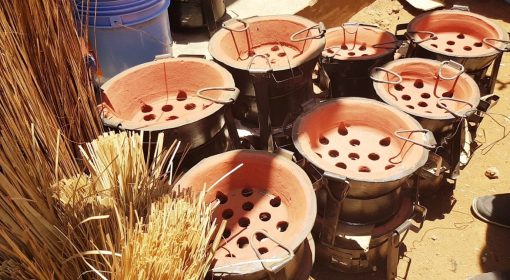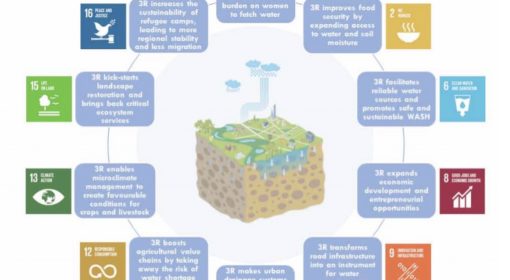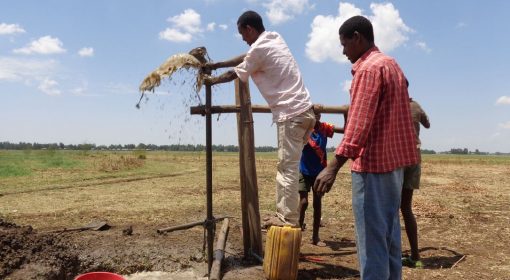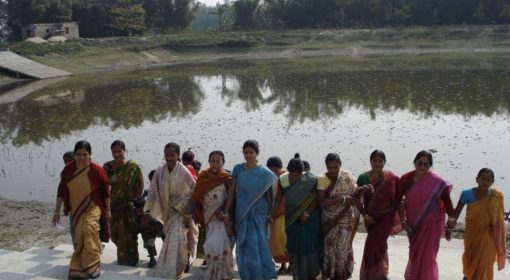{jcomments on}posted by Frank van Steenbergen, courtesy Rajeshwar Mishra
February 25, 2013

They were sometimes created by the stroke of a pen – but also perished by it: Water Users Associations or WUAS. For instance, in the Gezira system in Sudan – Africa’s largest irrigation system – a several years-long effort to reform the irrigation system with World Bank support came to an abrupt end last year with the abolishment of WUAs.
In other countries, WUAs were given large responsibilities overnight, asked to take over tasks that the government had been failing to do: collect funds for maintenance or control water thievery. This happened in Sindh in Pakistan where some organizations took it upon themselves to ‘create’ more than hundreds of farmer organization on large irrigation distributaries within a short time span– in an environment that is highly politically charged and power-imbalanced. Clearly this was going to be difficult.
The same in the canal areas of the Krishna Delta in Andhra Pradesh in India. Here hundreds of WUAs came into being overnight as the result of a drastic policy move, whereby the services of the lower tiers of the Irrigation Department were reformulated. The WUAs ended up primarily doing maintenance work against government payment which earlier had been put out to tender to local contractors. Nothing else changed very much.
The love-affair with WUA’s in irrigation systems started in the early 1990’s. There were a number of reasons. One was the ‘management deficit’ in irrigation, especially in the larger systems: the lack of management and quality services, the lack of routine maintenance, the perpetual dependency on external funding and the general disconnect between farmers and water bureaucracies. Things as they stood were insufficient basis to justify (donor) investment in irrigation. In a world of water scarcity irrigators were the lucky ones, so it was strange that they would need to be supported that much.
Against this background, WUAs presented themselves as the way-out and became a standard ingredient in irrigation investment projects. They were elevated as the main farmer partner in development projects: involved in participatory consultation, contributing in cash or kind and often – but not always – given extensive training. WUAs were the equivalent of community organizations, health committees or parent associations.
Twenty years later we are all sadder and wiser and we can make up a balance of some sort. Against the failures or aborted efforts of WUAs there are also considerable successes even within difficult situations. Take the water users association in Daraban Zam in DI Khab Pakistan (see picture). This association consists of two layers (local and federation) and has initiated an overhaul of the large spate system after the devastating 2010 floods. It planned new diversion points, set up a fund for emergency maintenance and managed by better water management to add the area irrigated with 6000 hectares.
There are a number of lessons of two decades of WUAs. One is that they are not the miracle cure for all what ails in water management. If there are conflicts, huge technical problems (drainage, water logging, severe shortage) or political manipulation WUAs can make things better but not perfect. Barring some outstanding examples there is only so much a better local organization can achieve.
Second, water management is forever. However WUAs were often created as partner organizations in projects that came to an end. They then entered into a world where they had no clear place and support and risked being ‘out of context’. If WUAs are to persist and contribute to better water management they should be an integral part of local governance.
Third, strong WUAs do not come about by ‘wishing they were there’. They are organizations and organizations need to start and mature. Often still there is the assumptions that ‘communities will do’ the trick: for instance in Ethiopia WUAs are so thinly supported that it is no wonder that they are not at all strong. There is the opposite risk as well: too much hand holding and pampering during an investment project by externally scheduled meetings, fancy trainings and formal paperwork. This may leave the WUA and its members ill-prepared for the life thereafter.
Probably a more promising principle is that of ‘self evolving institutions’. The context needs to be there in which local organizations can establish themselves and fit within minimum legal provision and standard rules. It is more or less like football clubs that have established themselves – following the same rules of the game (not more than eleven players on the pitch to name one) and the requirements of national leagues and competitions. Massively successfully as they are there was never a development project that created ‘football clubs’. In fact some competition and peer pressure may also be healthy for local governance organizations such as WUAs: by meeting and engaging with each other they may compare themselves with others and learn and have the urge to do better. By federating they may find what they have in common and where critical mass helps.
This is the first in a series of posts on self-evolving institutions. Watch this space for more posts in the coming weeks, gathering examples and insights from around the world.



